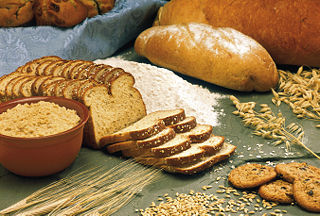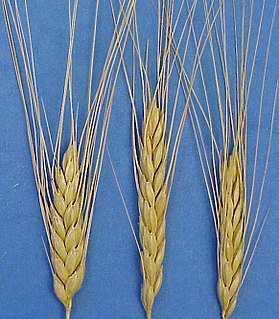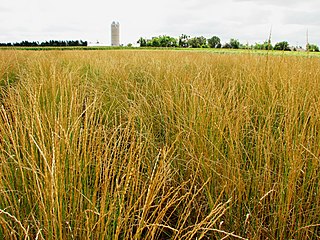Uses

It produces a tall, strong stemmed straw without the use of artificial fertilisers, which makes it popular with thatchers [2] and straw craftsmen. [3] It is also popular with artisan bread bakers and specialist organic millers. [4]
Maris Widgeon is a heritage variety of wheat that has traditionally been used for thatching in the UK. This variety was developed in 1964 by the Plant Breeding Institute in Cambridgeshire. The 'Maris' in the name, was derived from Maris Lane, the address of PBI headquarters in Trumpington, Cambridge. [1]

It produces a tall, strong stemmed straw without the use of artificial fertilisers, which makes it popular with thatchers [2] and straw craftsmen. [3] It is also popular with artisan bread bakers and specialist organic millers. [4]
There are two wheat varieties, suitable for thatching, on the current National List of Permitted Varieties (EU legislation policed by DEFRA) - Maris Widgeon and Maris Huntsman. [5] Until 2008/9 the only commercial seed distributor for Maris Widgeon was Pickards Seeds, of Burrington, Devon. Other traditional varieties have become unlisted which means that they cannot be bought, sold or even given away. [6] At one time, no option existed but to grow Maris Widgeon from kept seed. [7]
Maris Widgeon is currently commercially available from various outlets, such as Pearce Seeds of Yeovil, Somerset, for commercial or organic farming. [8] Pearce Seeds are responsible for 'maintaining and protecting' the Maris Widgeon heritage variety of wheat. [9]

A cereal is any grass cultivated (grown) for the edible components of its grain, composed of the endosperm, germ, and bran. The term may also refer to the resulting grain itself. Cereal grain crops are grown in greater quantities and provide more food energy worldwide than any other type of crop and are therefore staple crops. Edible grains from other plant families, such as buckwheat, quinoa and chia, are referred to as pseudocereals.

Wheat is a grass widely cultivated for its seed, a cereal grain which is a worldwide staple food. The many species of wheat together make up the genus Triticum; the most widely grown is common wheat. The archaeological record suggests that wheat was first cultivated in the regions of the Fertile Crescent around 9600 BCE. Botanically, the wheat kernel is a type of fruit called a caryopsis.

Rye is a grass grown extensively as a grain, a cover crop and a forage crop. It is a member of the wheat tribe (Triticeae) and is closely related to both wheat (Triticum) and barley. Rye grain is used for flour, bread, beer, crispbread, some whiskeys, some vodkas, and animal fodder. It can also be eaten whole, either as boiled rye berries or by being rolled, similar to rolled oats.

Straw is an agricultural byproduct consisting of the dry stalks of cereal plants after the grain and chaff have been removed. It makes up about half of the yield of cereal crops such as barley, oats, rice, rye and wheat. It has a number of different uses, including fuel, livestock bedding and fodder, thatching and basket making.

Eragrostis tef, also known as teff, Williams lovegrass or annual bunch grass, is an annual grass, a species of lovegrass native to the Horn of Africa, notably to modern-day Ethiopia. It is cultivated for its edible seeds, also known as teff.

Corn dollies or corn mothers are a form of straw work made as part of harvest customs of Europe before mechanization.

Emmer wheat or hulled wheat is a type of awned wheat. Emmer is a tetraploid. The domesticated types are Triticum turgidum subsp. dicoccum and Triticum turgidum conv. durum. The wild plant is called Triticum turgidum subsp. dicoccoides. The principal difference between the wild and the domestic is that the ripened seed head of the wild plant shatters and scatters the seed onto the ground, while in the domesticated emmer the seed head remains intact, thus making it easier for humans to harvest the grain.

Thatching is the craft of building a roof with dry vegetation such as straw, water reed, sedge, rushes, heather, or palm branches, layering the vegetation so as to shed water away from the inner roof. Since the bulk of the vegetation stays dry and is densely packed—trapping air—thatching also functions as insulation. It is a very old roofing method and has been used in both tropical and temperate climates. Thatch is still employed by builders in developing countries, usually with low-cost local vegetation. By contrast, in some developed countries it is the choice of some affluent people who desire a rustic look for their home, would like a more ecologically friendly roof, or who have purchased an originally thatched abode.

Khorasan wheat or Oriental wheat, commercially known as kamut, is a tetraploid wheat species. It is an ancient grain type; Khorasan refers to a historical region in modern-day Afghanistan and Iran in northeast and parts of Central Asia. This grain is twice the size of modern-day wheat and is known for its rich, nutty flavor.

An heirloom plant, heirloom variety, heritage fruit, or heirloom vegetable is an old cultivar of a plant used for food that is grown and maintained by gardeners and farmers, particularly in isolated or ethnic minority communities of the Western world. These were commonly grown during earlier periods in human history, but are not used in modern large-scale agriculture.

Intensive crop farming is a modern industrialized form of crop farming. Intensive crop farming's methods include innovation in agricultural machinery, farming methods, genetic engineering technology, techniques for achieving economies of scale in production, the creation of new markets for consumption, patent protection of genetic information, and global trade. These methods are widespread in developed nations.

Barley, a member of the grass family, is a major cereal grain grown in temperate climates globally. It was one of the first cultivated grains, particularly in Eurasia as early as 10,000 years ago. Barley has been used as animal fodder, as a source of fermentable material for beer and certain distilled beverages, and as a component of various health foods. It is used in soups and stews, and in barley bread of various cultures. Barley grains are commonly made into malt in a traditional and ancient method of preparation.

Thinopyrum intermedium, known commonly as intermediate wheatgrass, is a sod-forming perennial grass in the Triticeae tribe of Pooideae native to Europe and Western Asia. It is part of a group of plants commonly called wheatgrasses because of the similarity of their seed heads or ears to common wheat. However, wheatgrasses generally are perennial, while wheat is an annual. It has gained the Royal Horticultural Society's Award of Garden Merit.

Bere, pronounced "bear," is a six-row barley currently cultivated mainly on 5-15 hectares of land in Orkney, Scotland. It is also grown in Shetland, Caithness and on a very small scale by a few crofters on some of the Western Isles, i.e. North Uist, Benbecula, South Uist, Islay and Barra. It is probably Britain's oldest cereal in continuous commercial cultivation.
Mutation breeding, sometimes referred to as "variation breeding", is the process of exposing seeds to chemicals or radiation in order to generate mutants with desirable traits to be bred with other cultivars. Plants created using mutagenesis are sometimes called mutagenic plants or mutagenic seeds. From 1930 to 2014 more than 3200 mutagenic plant varieties were released that have been derived either as direct mutants (70%) or from their progeny (30%). Crop plants account for 75% of released mutagenic species with the remaining 25% ornamentals or decorative plants. However, although the FAO/IAEA reported in 2014 that over 1,000 mutant varieties of major staple crops were being grown worldwide, it is unclear how many of these varieties are currently used in agriculture or horticulture around the world, as these seeds are not always identified or labeled as having a mutagenic provenance.

This is a categorically-organized list of foods. Food is any substance consumed to provide nutritional support for the body. It is produced either by Plants or Animals, and contains essential nutrients, such as carbohydrates, fats, proteins, vitamins, or minerals. The substance is ingested by an organism and assimilated by the organism's cells in an effort to produce energy, maintain life, or stimulate growth.
The John Innes Centre Germplasm Resources Unit located in the Norwich Research Park, Norwich, England, is a Germplasm conservation unit and National Capability supported by the Biotechnology and Biological Sciences Research Council. The unit houses a number of internationally recognised reference and working collections for wheat, oats, barley and peas, which serves UK and non-UK based academic, industrial and non-industrial groups.
A composite cross population (CCP) is created by crossing a number of plants from different lines, and subsequently bulking seeds from the resulting offspring. This makes a CCP a population of plants with a lot of inherent genetic diversity, in contrast to monocultures where all plants are clones and homozygous at all loci. In recent years CCPs have been proposed as a way to create modern landraces of wheat, barley and oats. Research is done to explore whether they are better suited for organic farming than the modern cultivars.
The Plant Breeding Institute was an agricultural research organisation in Cambridge in the United Kingdom between 1912 and 1987.